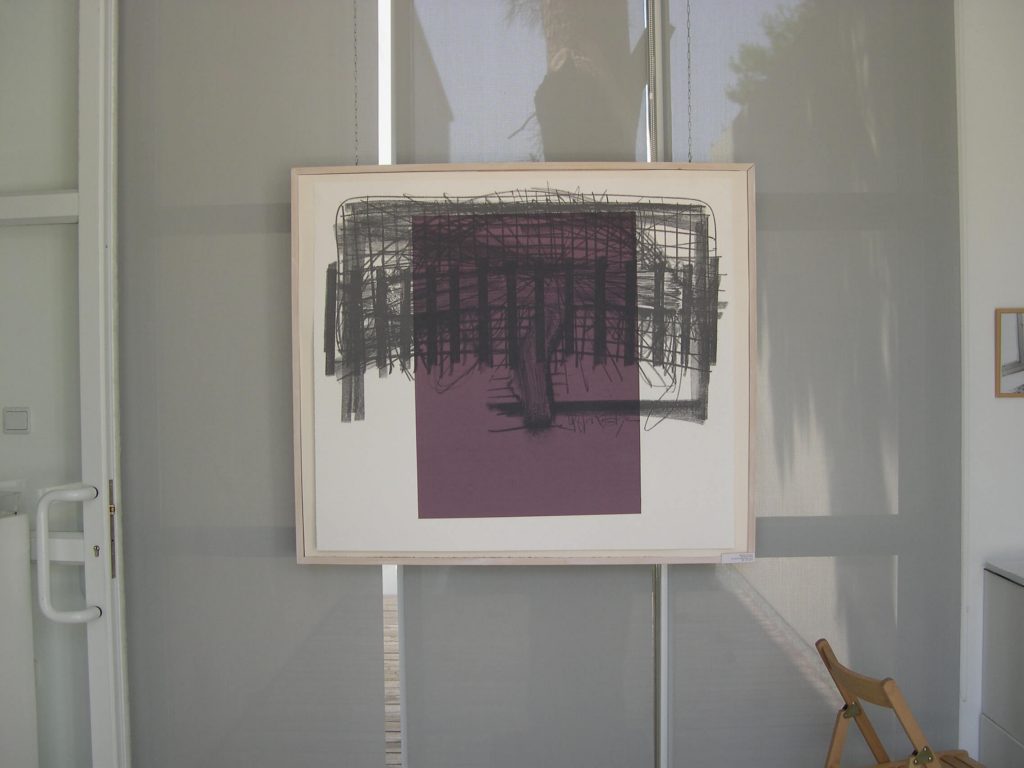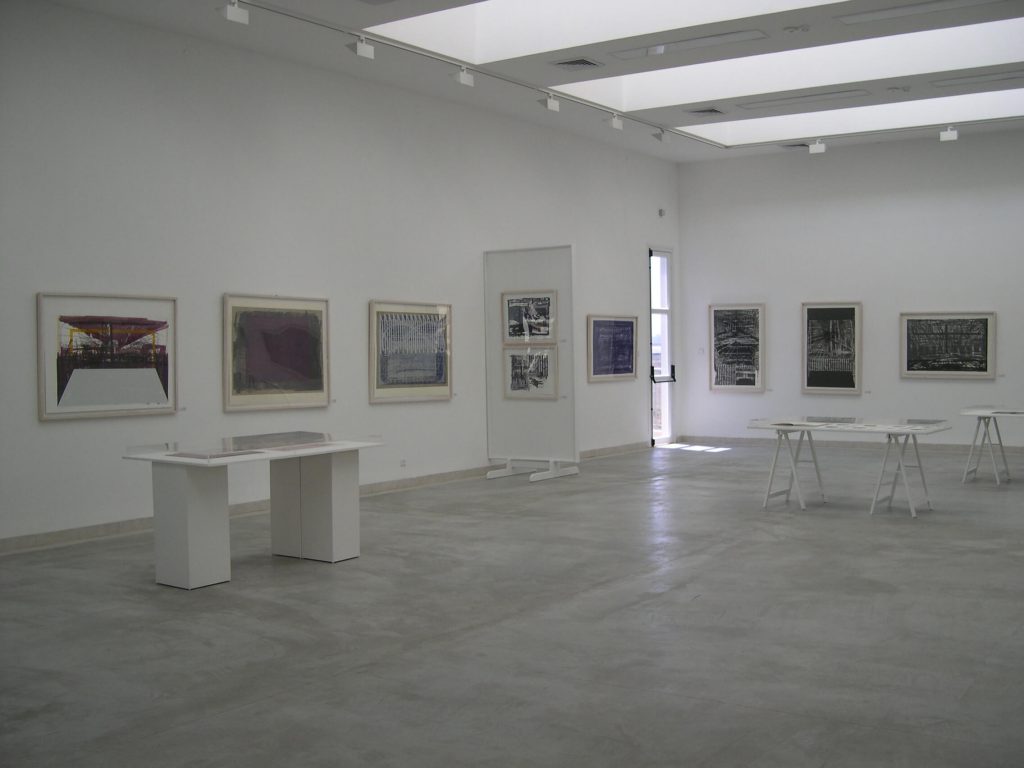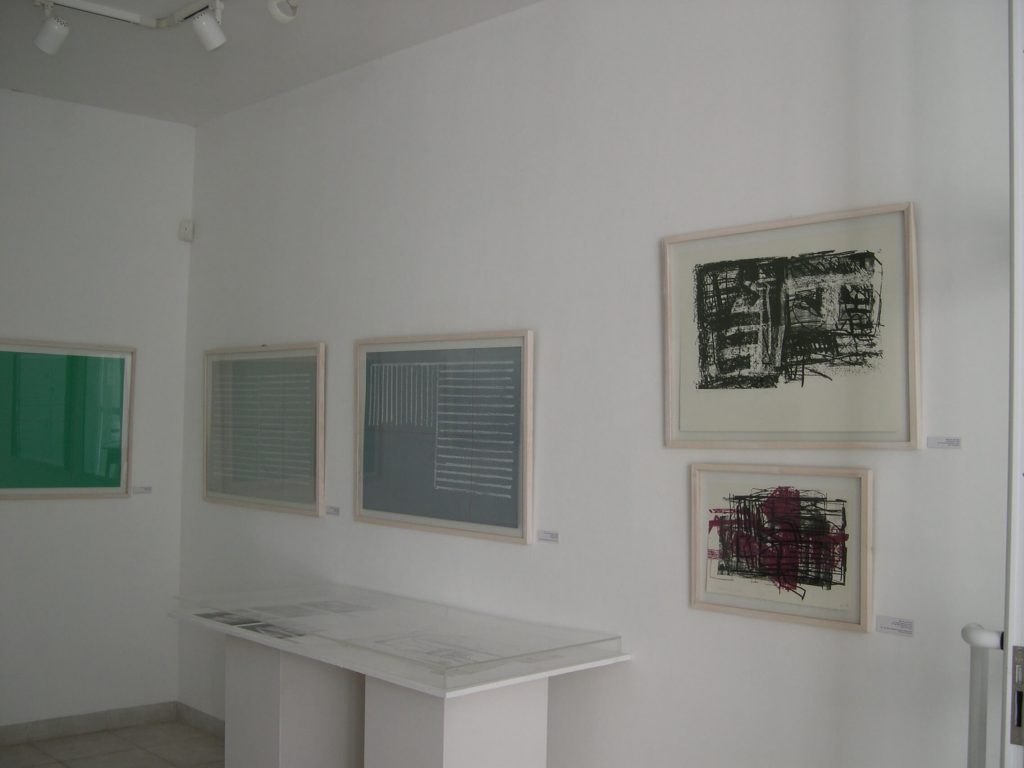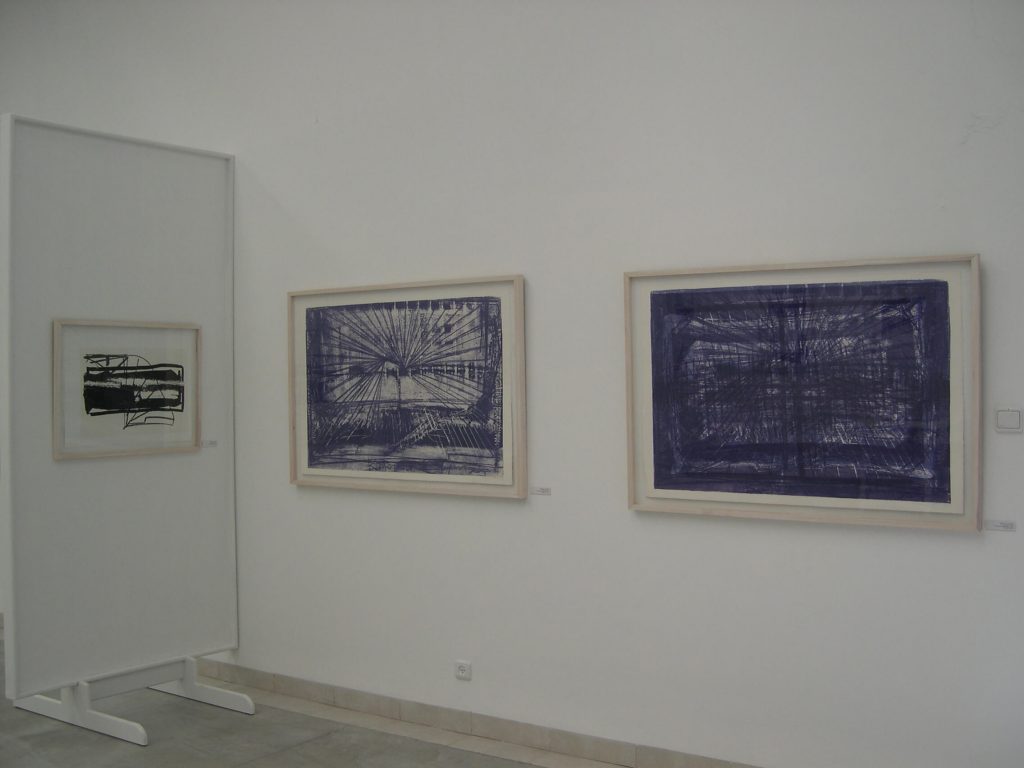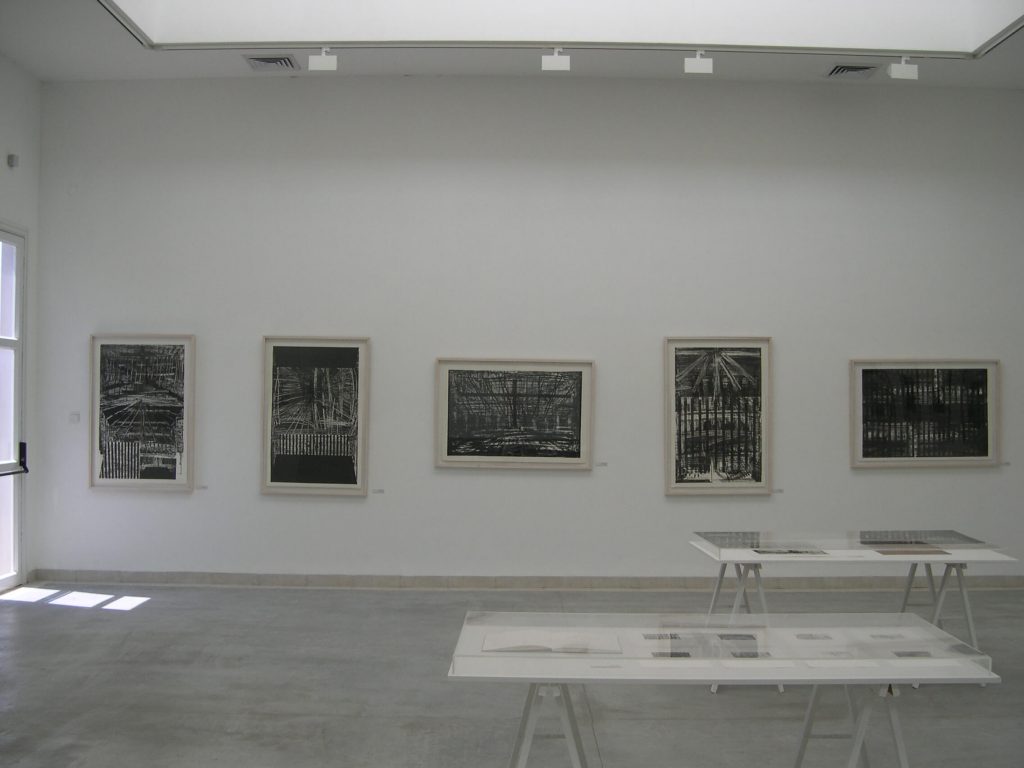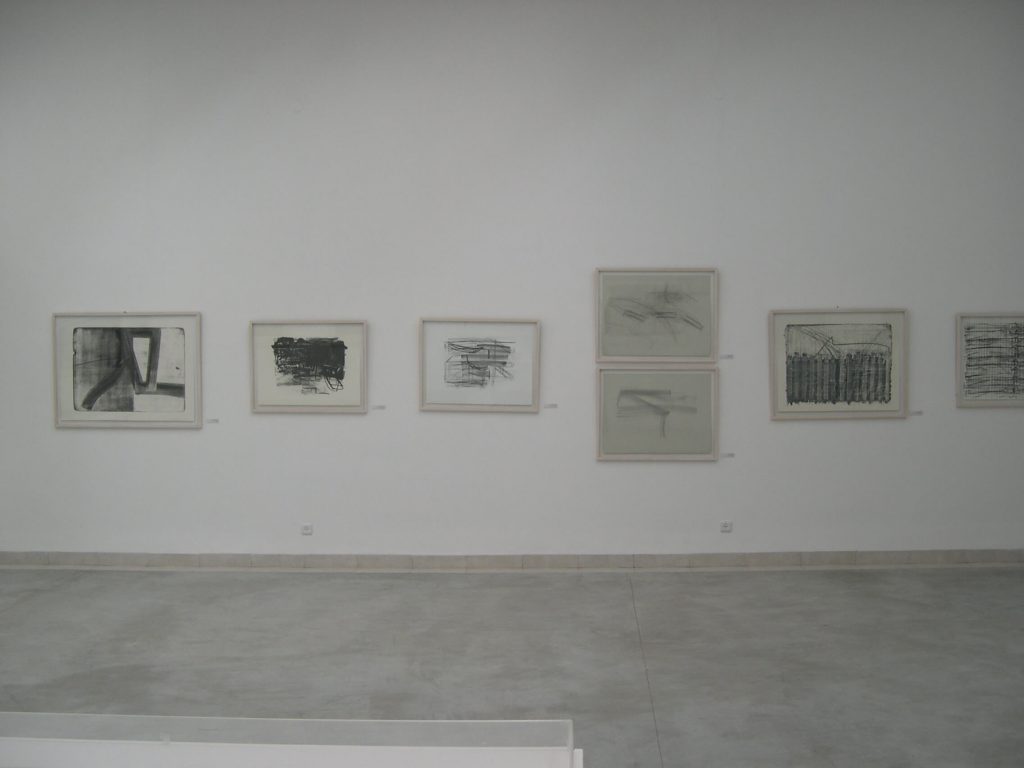Moshe Kupferman – Known prints, rare prints
(October 2004 – June 2005)
Most likely that paper was the great and multifaceted love of Moshe Kupferman – a frank and stormy love, intimate and reserved, docile to materials (the paper and the pencil…) or bursting into them; Moshe dedicated long periods to the paper, from the “illustrations” and the humble prints according to a model, and while drifting about in the nature -during his first years in the Kibbutz- for the large scale “work on paper” and the momentum of most of his creative activity’s years, and ending with small “scrolls” and “groups’, which are as a personal diary. Each one of the aforementioned categories (as well as others) and their development phases grow from within the essence of experience: first the discovering phases, “experimentation with materials” and “examination of possibilities”, and then the realization phases of the same experience that slowly and unexhausted accumulates along the years.
Moshe became acquainted with the print through friends that appreciated his work and wanted, each on his turn, to propose to him a different experience. In this manner the discovery of the new technique summoned for him also the beginning of a new stage in his work during which, along the years, produced -while fruitfully cooperating with professionals- surprising and often unexpected qualities in the expression of the encounter between work and materials.
Nechama Hillman, an old friend and admirer of Moshe -whom established and managed the Berston Print Workshop in Jerusalem- invited him to experience with the stone printing technique. Their strong cooperation yielded, between 1975 and 1984, more than 40 editions of prints, most of them white and black, which are as a praising song to the talent of Kupferman as a painter.
Moshe was introduced to the silkscreen print technique in the Jerusalem Printing Workshop, managed until today by Arik Kilemnik. In 1980, Moshe printed -using this technique- the first three editions jointly with the artist Larry Abramson, and this work is exhibited for the first time here (outside the Jerusalem Printing Workshop). However, two years earlier Moshe received a letter from Larry (dated February 17, 1978), and from this letter we can learn that they worked also before that` we quote:
“If you remember the days when we worked on your print, then we discussed (half jokingly, half seriously) about the possibility to do a joint print. As much as I think about this, the idea seems more suitable. The print in sequences: you throw to me an element, I respond and my reaction becomes a datum to which you must react, and so on, until is created the balance between both languages, both hands, both personalities…”
If I am not mistaken this “sequential joint print” remained a dream. Thus, there was a continuation: the print created by Larry ten years later and denominated “Kupferman’s dream”.
In 1984, Moshe tried once more the silkscreen print technique, and this time at the workshop of Yaakov Harel in Jaffa. During the nineties, Moshe returned to the workshop in Jaffa to experience techniques, using methods and processes that in 1990 produced 10 editions of prints, 40 editions during 1996-1998; these compete (almost) with his large canvases, rich in materials and expressivity.
The last phase in this journey, short but breathtaking, took place in 1995: it is represented in a group of 8 engravings, executed in the Kabri Print Workshop, which under the management of Ofra Raif constitutes a fertile meeting place for artists. Ofra says that Moshe was uncomfortable working on a copper or iron board (but the results do not evidence any type of difficulty…).
To conclude the history of Moshe’s meetings with the publishers of the prints, we must remind two rare items: the engravings book “First Test” created in 1988 at the publishing house of the American Jacob Samuel, and the single screen print done for Rachel L. Malis in the frame of the portfolio project in memory of Tzvi Meirowicz, soon to be published. This print, signed by Moshe not long before his death, is also exhibited for the first time here.
Yona Fischer
October 2004
